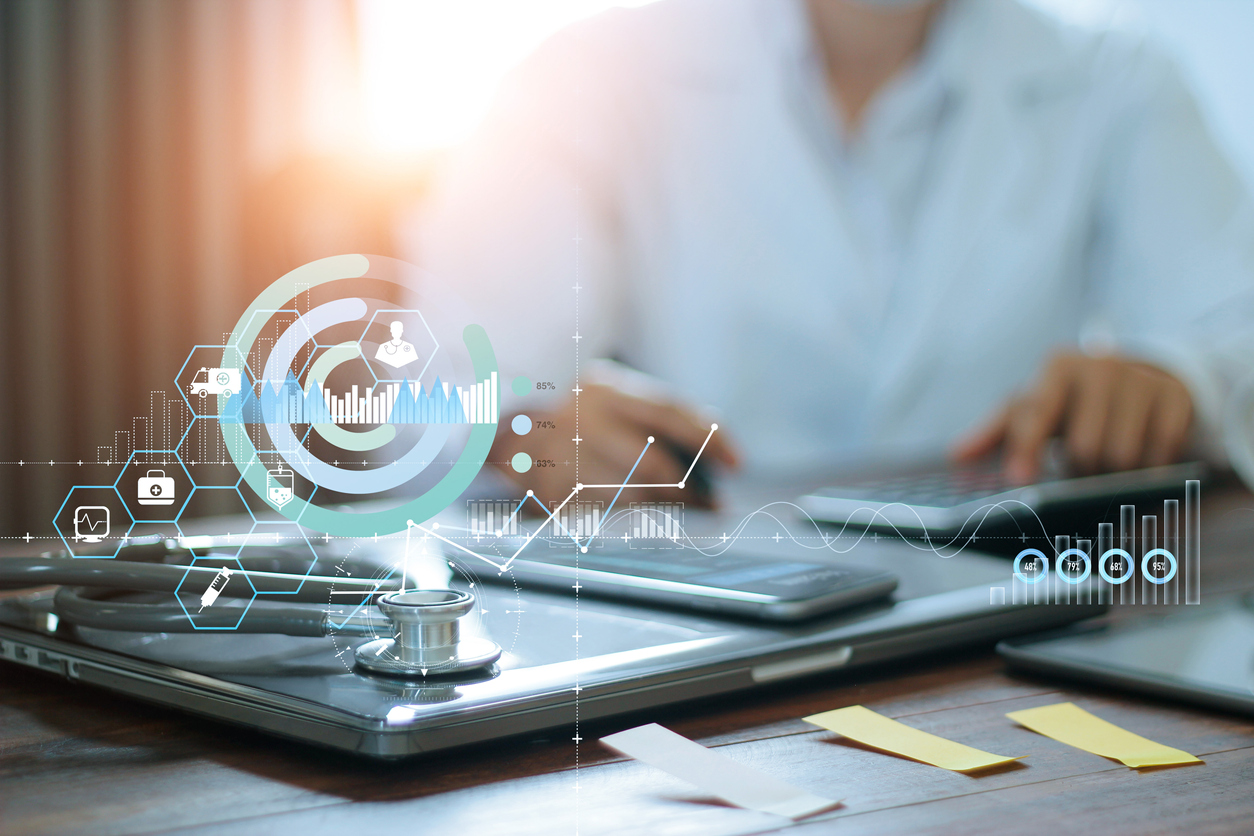
29 Aug Moving towards a digital approach for diagnostics in Africa
Earlier this month, we sat down with Prof. Tobias Rinke de Wit, Director of Research PharmAccess, molecular biologist, public health specialist and Senior Fellow at AIGHD, to discuss his pioneering work in digitalizing diagnostics in Africa: ‘Connected Diagnostics’.
‘Connected Diagnostics’ refers to digitalizing rapid point-of-care diagnosis for linking results to payment channels through mobile phones while at the same time creating dashboards to inform policy makers and health managers. This is possible in Africa given the stormy developments of mobile phone usage and mobile phone-facilitated payments through ‘bankless banking’ initiatives, such as M-PESA in Kenya.
Diagnostics play a vital role in health systems. Although diagnostics encompass only 10-15% of healthcare costs, it determines 75% of medical decisions. Diagnostics is particularly important for early warning and monitoring epidemics, which became strikingly apparent in the recent COVID-19 pandemic. Tobias is focused on creating connected diagnostics that are “point-of-care tests close to the patients, easily digitalized, diagnosing important public health conditions that have a local affordable treatment solution: so-called Test&Treat.”
The benefits of connected diagnostics are abundant, as described already in several papers*. Digitalizing rapid test results makes the specialist ‘look over the shoulder’ of the point-of-care community health worker, or patient and incorrect(ly performed) tests can rejected. Moreover, results can be displayed in almost real-time on mobile phone dashboards to help policy makers and health managers to make better-informed and more rapid decisions. Outbreaks can be localized geographically and in specific socio-economic populations, facilitation better targeting of funds. Payments can be channeled ‘bottom-up’ to those who are in need (patients) their healthcare providers, instead of ‘top down’ through intricate public healthcare systems with potential caveats of ‘overheads’. Connected Diagnostics can avoid over-prescription and thus contribute to tackling antimicrobial resistance. Prof. Rinke de Wit is convinced about the future of ‘personalized diagnostics’, especially in resource-poor settings.
“Personalized diagnostics has the power to bring the right medicines for the right health conditions to the right patients at the right time. I have always promoted the use of COVID-19 tests at the community level and preferably at home. It is really outdated to only consider official laboratories when performing diagnostic tests, whether in Africa or in Europe. There is great power with the people as an additional diagnostic force**”
With the rise in technology, personalized diagnostics are becoming increasingly available. Prof. Rinke de Wit argues that “this diagnostic future is unavoidable, sooner or later we will have our own ‘bio-avatars’ on our mobile phones, whether we like it or not.” He recognizes that on the one hand personalized diagnostics will become a great tool to empower people to take control of their own health. But on the other hand there are looming questions, such as: “How much data can a human being cope with before these make you more sick than healthy? And what about the privacy issues of using mobile phones for health data transfer, with Chinese phones being the no.1 choice in Africa?”
While exploring new research opportunities in the field of diagnostics, Prof. Tobias Rinke de Wit encourages using a multidisciplinary approach. He says, “global health is not just analyzing an excel sheet or a Stata database. The truth around us cannot be summarized in quantitative figures alone, nor can it be just described in qualitative matters. Together they strengthen the picture. For Connected Diagnostics, the bio-medical-technical part is just one side of the story. We need to learn about its business models and financial consequences for payers, providers, and patients through economic research. We need to understand the user experience of Connected Diagnostics through social science. That is why doing operational research through AIGHD is such an advantage.”
As for the next steps, Tobias hopes to scale Connected Diagnostics from thousands to millions of people. The challenge will be to understand what makes “pilot projects scalable and how can we particularly find ways to finance scale-up diagnostics, particularly in the African setting. He acutely underscores the importance of Connected Diagnostics particularly in relation to epidemics. He explains, “epidemics come, and they go. You need a flexible healthcare system that can expand when necessary and contract again when the epidemic is over. The best way to do so is by digitalizing the health system. I remain fascinated by the role of diagnostics in creating a more flexible, robust, and resilient healthcare system in Africa.”
* https://pubmed.ncbi.nlm.nih.gov/31331394/; https://pubmed.ncbi.nlm.nih.gov/34348696/; https://www.medrxiv.org/content/10.1101/2021.08.31.21262891v4; https://www.medrxiv.org/content/10.1101/2022.03.29.22271489v1
** https://www.ncbi.nlm.nih.gov/pmc/articles/PMC7956051/
